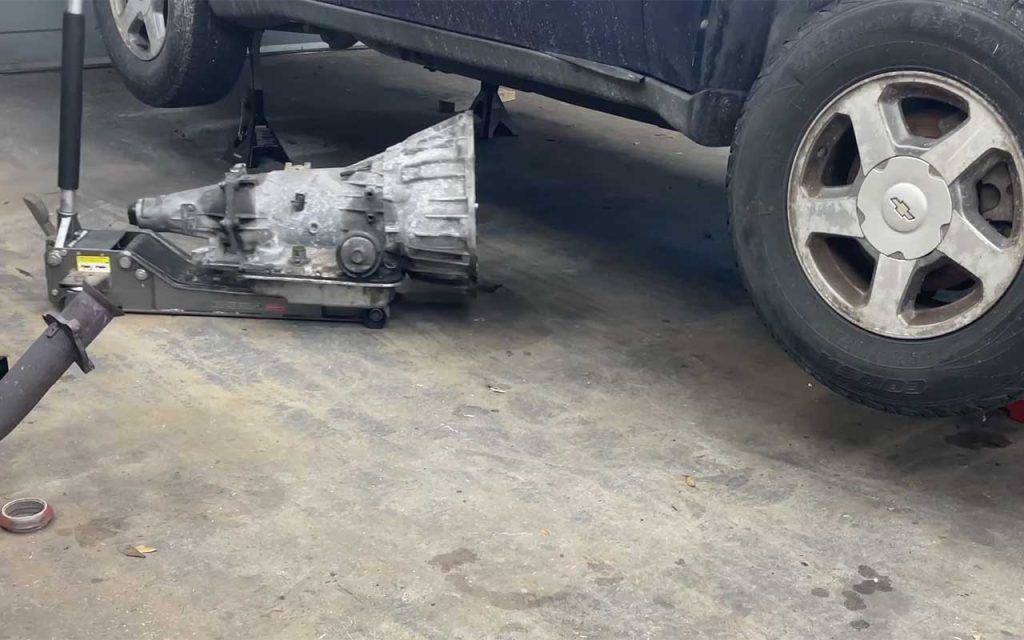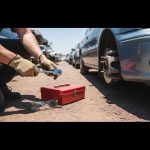Buying a Used Chevy Silverados Transmission From a Junkyard
Buying a used transmission for your Chevy Silverado can be a great way to save money and time on fixing your vehicle. A new transmission can cost thousands of dollars, but used ones can be much cheaper—sometimes 50-75% less. Salvage yards, like those listed on u-pull-it.com, can help you find a good, reliable used transmission for your Silverado so you can get back on the road without spending too much. Whether you need a Chevy Silverado 1500 transmission or other Chevy parts, junkyards offer great options at lower prices.
Benefits of Buying a Used Transmission
- Cost Savings: Buying a used Chevy Silverado 1500 transmission can save you a lot of money compared to getting a new one. You can find these parts for up to 50-75% less, which is a huge saving, especially for big vehicle parts.
- Readily Available: Junkyards usually have a big inventory of parts. Instead of waiting days or weeks for a new part to arrive, you can often find used transmissions available right away. This saves time and helps you get your Chevy Silverado back on the road faster.
- Eco-Friendly: Using a recycled part is also good for the environment. Buying used parts means less manufacturing and less waste. Every used transmission you buy helps save resources and reduce pollution.
Common Transmission Models for Chevy Silverado
- Transmission Types and Differences: Each transmission model used in the Chevy Silverado has unique features. For example, the 4L60E is known for its reliability in light-duty trucks, while the 4L80E is stronger and better for heavy-duty use. The 6L80 and 6L90 models provide improved fuel efficiency and smoother shifts compared to older models. Understanding these differences helps you choose the right transmission based on your needs.
- List of Common Transmissions: There are several common transmission models used in different years and trims of the Chevy Silverado, including the 4L60E, 4L80E, 6L80, and 6L90. Knowing which transmission model fits your Silverado is important to ensure compatibility.
- Transmission Evolution: Over the years, Silverado transmissions have evolved. Earlier models used 4-speed automatics like the 4L60E, while later models use 6-speed or even 8-speed automatics like the 6L80. Understanding this evolution will help you know what to look for based on your Silverado’s model year.
Signs Your Transmission Needs Replacement
- Symptoms of a Failing Transmission: Some common signs that your transmission might need to be replaced include slipping gears, delayed gear engagement, unusual noises (such as whining or grinding), leaking fluid, or a warning light on the dashboard. If you notice any of these symptoms, it may be time to replace your transmission.
- Diagnostic Tips: It’s a good idea to have a professional mechanic diagnose the issue before buying a replacement. They can confirm if the transmission is the problem or if a simpler fix is possible.
How to Find the Right Transmission for Your Chevy Silverado
- Evaluating Junkyard Reliability: When looking for a junkyard, check online reviews or ask people you trust for recommendations. Look for junkyards that provide warranties and test their parts before selling. This helps make sure you get a good quality transmission.
- Local Junkyards: Start by looking for local junkyards near you. You can use the directories available at U-Pull-It.com to find junkyards that carry used Chevy Silverado transmissions. This can help you find the exact Chevy Silverado 1500 transmission you need without wasting time.
- Check Online Inventories: Many junkyards list their parts online, so you can browse before even visiting. This makes finding the right transmission easier. You can check the inventory at U-Pull-It to see if they have what you need. This can save you time and help you know where to go.
- Junkyard Interchange System: Most junkyards use a system that helps find parts that work across different vehicles. This system makes it easier to find a Chevy Silverado transmission that may be compatible from another GM vehicle. It helps you find reliable parts that fit your vehicle.
Identifying the Correct Transmission
- Transmission Specifications: It’s important to know the exact transmission model you need for your Chevy Silverado. This includes understanding the transmission code, engine compatibility, and drivetrain specifics (such as whether your vehicle is 2WD or 4WD and whether you need an automatic or manual transmission).
- Use of VIN and RPO Codes: You can use the Vehicle Identification Number (VIN) and Regular Production Option (RPO) codes to find the correct transmission model. These codes provide important details about your vehicle and ensure you are getting the right part.
- Compatibility Charts: You can also look up compatibility charts online or ask the junkyard to provide information on which transmission models are compatible with your specific Silverado year and trim.
Visiting a Junkyard to Inspect and Buy a Used Transmission
- Questions to Ask When Calling Ahead: When you call the junkyard, ask if the part has been tested and if there are any guarantees or warranties available. Also, confirm the condition of the transmission and whether they can provide any paperwork about its history or mileage.
- Call Ahead: Before you go to a junkyard, it’s a good idea to call ahead. Make sure they have the transmission that fits your Chevy Silverado’s year and model. This will save time and make sure the part you need is available.
- Inspect the Transmission: When you get to the junkyard, make sure to check the transmission yourself. Look for any visible damage like cracks, rust, or leaking fluid. Also, check the color and smell of the transmission fluid—burnt-smelling or dark fluid can be a sign of problems. Checking the part can help you feel more confident that it’s in good condition.
- Necessary Tools: If the junkyard is a “you pull it” style, you will need to bring your own tools to remove the transmission. Bring:
- Socket set
- Wrenches
- Transmission jack
- Flashlight to see hard-to-reach parts
- Pry bar and pliers
- Fluid pan for any leftover transmission fluid
Negotiation Tips
- Price Research: Before buying a used transmission, research the average prices online or by calling a few junkyards. Knowing the average price gives you a good baseline for negotiation.
- Condition-Based Bargaining: If you find any wear or issues with the transmission during inspection, use this to negotiate a lower price. Junkyards are often willing to adjust the price based on the part’s condition.
Testing the Transmission
- Bench Testing: Some simple tests can be done at the junkyard to check the transmission’s condition. For example, rotate the input shaft to see if it moves smoothly. You can also try shifting gears to see if they engage correctly.
- Ask for Test Results: If the junkyard tests parts before selling, ask to see the test results or any documentation they have. This will give you extra confidence in your purchase.
Transmission Removal Tips
- Step-by-Step Removal Guide: Removing a transmission can be tricky. Make sure to disconnect the driveshaft, transmission cooler lines, and wiring harnesses properly. Be cautious when handling heavy parts.
- Safety Precautions: Always properly support the vehicle with sturdy jacks and stands. Use appropriate lifting equipment like a transmission jack to handle heavy parts. Disconnect the battery before starting any work to prevent electrical shocks.
- Teamwork Importance: Removing a transmission is easier and safer with two people. The transmission is heavy and awkward to handle alone, so having help can make the process smoother and prevent injuries.
Why Junkyard Parts Are Reliable
Have you ever wondered how transmissions end up in salvage yards? Many vehicles in junkyards were in minor accidents but still have parts that work perfectly. For example, the engine or transmission may not have been damaged in the accident at all. Because of this, junkyard parts can be in very good shape. Cars that end up in salvage yards often have only body damage, so parts like transmissions can still be in great condition.
This means junkyard transmissions are usually reliable. These parts were often well-maintained by the previous owner before the accident. Plus, the money you save by buying used is a huge benefit, especially when you can find parts in such good working condition.
Return Policies and Core Charges
- Core Charges: Some junkyards charge a core fee when you buy a transmission. This means you pay a bit extra, but you get that money back if you return your old transmission. It’s like a deposit to encourage recycling.
- Return and Exchange Policies: Make sure you understand the junkyard’s return policy in case the transmission doesn’t work after installation. Some junkyards may allow returns or exchanges if the part is faulty.
Warranty Coverage on Junkyard Transmissions
A lot of people worry about reliability when buying used parts, but many junkyards offer warranties. These warranties can last from 30 to 90 days, and sometimes even longer if you pay extra. There are usually two types of warranties: standard and extended. A standard warranty typically covers a shorter period and only basic issues, while an extended warranty covers a longer period and may include more problems or even labor costs. Before buying a transmission, ask about the junkyard’s warranty policy, including what is covered and the difference between standard and extended warranties. This warranty gives you extra security that the part will work.
Installation Considerations
- Professional Installation vs. DIY: You can either install the transmission yourself or hire a mechanic. If you are not experienced in working with car parts, it’s usually better to hire a professional. This way, you avoid any mistakes, and the warranty might only be valid if a certified mechanic installs the part.
- Warranty Implications: Some junkyard warranties only stay valid if the part is installed by a certified mechanic. Ask about this before buying.
Safety Precautions
- Safe Removal Practices: If you plan on removing the transmission yourself, make sure the vehicle is safely supported. Always use sturdy jacks and stands, and disconnect the battery before you start working to avoid electrical shocks.
- Protective Gear: Wear gloves and eye protection to stay safe while working. Handling heavy parts like a transmission can be dangerous, so be careful.
Risks and How to Avoid Them
- Potential Drawbacks: Buying used parts does come with risks. The part might not last as long as a new one, or it could have hidden problems.
- Mitigation Strategies: To reduce these risks, get parts from a well-reviewed junkyard, check for warranties, and inspect the part thoroughly before buying. Always ask about the donor vehicle’s history and mileage.
Alternatives and Additional Resources
- Rebuilt or Remanufactured Transmissions: You can also consider buying a rebuilt or remanufactured transmission. These are often more reliable than used ones and usually come with a warranty, providing a good balance between cost and quality.
- Helpful Tools and Links: You can use online forums, instructional videos, or the official Chevy parts catalog to help you identify the right transmission and guide you through the buying process.
Additional Costs to Consider
- Accessories and Fluids: Remember to budget for new transmission fluid, filters, gaskets, and seals. These items are necessary for proper installation and long-term reliability.
- Special Tools: Some special tools might be needed for the installation. You can often rent these tools from auto parts stores if you don’t want to buy them.
Post-Purchase Considerations
- Proper Installation and Break-In: Follow proper installation procedures and allow time for a break-in period for the transmission. This helps ensure that everything works smoothly.
- Monitoring Performance: After installing the transmission, keep an eye on its performance. If you notice any issues like strange noises or gear slipping, address them quickly to avoid further damage.
Local Regulations
- Transportation of Heavy Parts: Make sure you have a suitable vehicle, like a truck or van, to transport the transmission home. Some junkyards may assist with loading, but you will need proper transport.
- Permits and Legal Requirements: Check if there are any local regulations or permits needed for transporting large auto parts. This can vary based on your location.
Environmental Benefits
- Supporting Recycling Efforts: Buying used parts reduces the demand for new manufacturing, conserves raw materials, and helps minimize environmental impact. This contributes to a greener planet.
- Community Impact: Purchasing from local junkyards supports the local economy and helps maintain sustainable business practices in your community.
Customer Reviews and Reputation
- Junkyard Reputation: Before choosing a junkyard, check online reviews or ask friends and family for recommendations. A reputable junkyard is more likely to provide quality parts and good service.
- Customer Service: Good customer service is important when buying used parts. Knowledgeable staff can help you find the correct transmission and answer any questions you have.
Extended Warranties and Insurance
- Warranty Extensions: Some junkyards offer extended warranties for an additional fee. If you want extra peace of mind, it may be worth the cost.
- Insurance Considerations: Notify your insurance company after replacing your transmission. This might affect your coverage or premiums, especially if the replacement part changes the value of your vehicle.
Steps to Buying a Used Transmission
| Step | Description |
|---|---|
| Research | Look for junkyards, check online inventories, and find the right transmission. |
| Call Ahead | Contact the junkyard to confirm availability and compatibility of the transmission. |
| Inspect the Part | Visit the junkyard, inspect for damage, check the fluid, and assess overall condition. |
| Ask About Warranty | Make sure there is a warranty to cover the transmission if there are any problems. |
| Purchase and Remove | Bring the right tools if it’s a “you pull it” yard and safely remove the transmission. |
| Install Safely | Decide if you’ll install it yourself or hire a mechanic, considering warranty implications. |
FAQ Section
- Is the transmission compatible with my specific Chevy Silverado model and year?
- You need to know your Silverado’s year, trim, and engine details. Ask the junkyard staff or use their interchange system to find a compatible Chevy transmission.
- How much money can I save by buying a used transmission instead of a new one?
- You can save 50-75% of the cost. For example, if a new transmission costs $2,500, a used one could be between $625 and $1,250. This makes it a good choice for many Chevy Silverado owners.
- Does the junkyard test the transmission before selling it?
- Most good junkyards will test their transmissions. Ask if they have checked it before removal to make sure it works properly.
- What should I bring if I want to remove the transmission myself?
- Bring a basic toolset, including wrenches, socket sets, a transmission jack, and a fluid pan. Having the right tools will save you time and make it easier.
- Do junkyards offer installation services for the transmission?
- Most junkyards don’t offer installation services, but they might recommend reliable mechanics. Ask if they have any partners or discounts for customers.
Conclusion
Buying a used Chevy Silverado transmission from a junkyard is a smart way to save money and keep your truck on the road. By using trusted junkyards like those found on U-Pull-It.com, you can find quality parts that work well without spending too much. Don’t let expensive repairs stop you—explore used parts and get your Silverado running again. Whether you need a used Chevy Silverado 1500 transmission or other parts, junkyards can save you both time and money. Contact your local junkyard today to find the parts you need.




